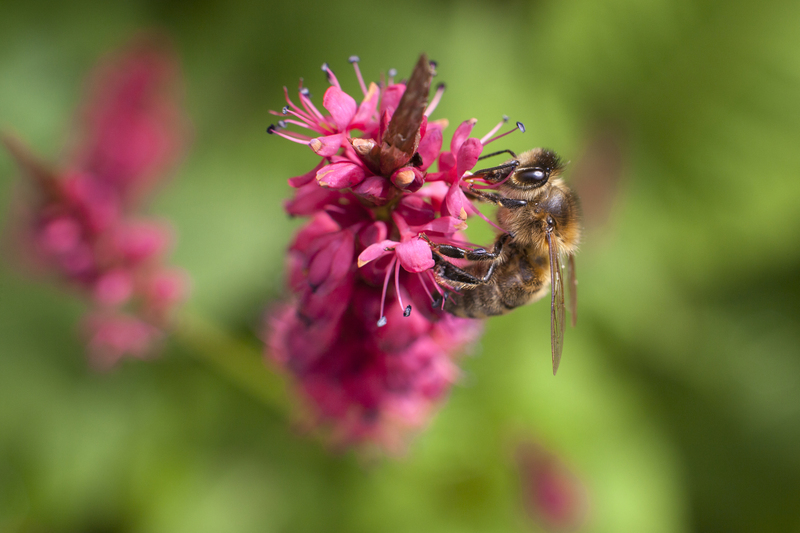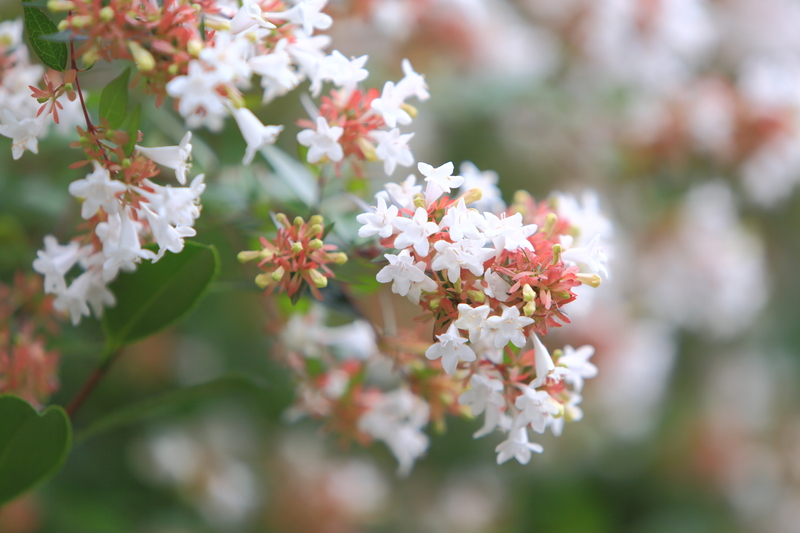Simple Home Solutions to Eliminate Unwanted Tree Stumps
Tree stumps left behind after tree removal can be more than just an eyesore in your yard--they can become tripping hazards, attract pests and fungi, or make landscaping difficult. Whether you're looking to beautify your property, reclaim space, or get rid of potential problems, simple home solutions to eliminate unwanted tree stumps can help you achieve a smoother, safer, and more enjoyable outdoor space. In this comprehensive guide, we'll cover a variety of effective DIY methods and provide tips to make the process faster, safer, and more efficient. Read on to learn which method is best for your lawn and landscape!

Why Remove Tree Stumps?
Before exploring the best tree stump removal solutions, it's important to understand the practical reasons for getting rid of unsightly stumps:
- Safety: Exposed stumps are a tripping hazard, especially for children and pets.
- Insects and Pests: Stumps can harbor termites, ants, beetles, and other pests that may migrate to healthy plants or your home.
- Fungal Growth: Stumps may rot and foster mushrooms or other harmful fungi, posing risks to pets and children.
- Curb Appeal: A clear, clean yard increases your home's attractiveness and value.
- New Landscaping Opportunities: Removing stumps opens up possibilities for planting gardens, lawns, or new trees.
Simple Home Remedies for Tree Stump Removal
There are several easy home solutions to eliminate tree stumps without expensive equipment or professional help. The best approach depends on the stump's size, location, and how fast you want it gone. Here are the most popular DIY stump removal methods:
1. Manual Tree Stump Removal
Manual removal is suitable for small to medium-sized stumps with shallow root systems. This labor-intensive method is environmentally friendly and requires minimal materials. You'll need:
- A sturdy shovel
- Mattock or axe
- Saw or loppers
- Steel digging bar (optional)
- Gloves and safety goggles
- Dig Around the Base: Use the shovel to dig around the stump, exposing as much of the root system as possible.
- Cut Through the Roots: Sever the roots with an axe, mattock, or saw. Remove roots as you go to make the stump looser.
- Loosen the Stump: Work the stump back and forth, using the digging bar for extra leverage if needed.
- Pry Out and Remove: Once the main roots are cut, force the stump out of the ground and fill in the hole with soil.
Tip: For larger stumps, dig deeper to expose the main roots, and consider enlisting help from a friend. This manual tree stump removal technique is best for those willing to put in some physical effort, but it rewards you with immediate results and no chemicals involved.
2. Chemical Stump Removal for Homeowners
If you're looking for a less labor-intensive way of eliminating unwanted tree stumps, chemical methods may be your best option. You can purchase stump removal products from garden centers or hardware stores. These products accelerate the decomposition process, making the stump soft and easier to break apart.
- Drill large holes: Use a power drill with a wide bit to make several holes, at least 8-10 inches deep, across the top and sides of the stump.
- Apply chemical stump remover: Fill each hole with the product (usually potassium nitrate).
- Add water: Pour water into the holes to help the chemicals absorb into the wood.
- Wait: Allow several weeks for the chemicals to break down the wood fibers; the time depends on the stump size and wood type.
- Break apart: Once the stump softens, use a shovel, mattock, or axe to break apart and remove the rotted wood.
Note: This chemical stump elimination process is not instantaneous, but it requires very little physical effort. Always follow the manufacturer's instructions for safety and effectiveness.
3. Burning Tree Stumps: A Controlled Solution
For those comfortable with fire and local regulations permitting, burning is a traditional technique for eliminating unwanted tree stumps at home. This solution works best on seasoned, dry stumps.
- Preparation: Clear the area around the stump and ensure fire safety measures are in place. Always check local laws before proceeding.
- Drill holes: As with chemical removal, create holes to allow for better burning.
- Accelerant (Optional): Some people use kerosene--not gasoline--for safety, poured into holes and allowed to soak for a day or two.
- Ignition: Place kindling on top and light the stump. Carefully monitor the burn.
- Cleanup: Once the stump is fully charred and cool, break it apart and dispose of the ashes properly.
Important: Burning tree stumps can be risky and may be illegal in certain municipalities. Always obtain any required permits, have water and fire extinguishing materials nearby, and never leave fires unattended.
4. Natural Decay Acceleration - Eco-Friendly Stump Removal
If you're not in a hurry, accelerating natural decay is an excellent green solution for unwanted stumps. Nature will eventually reclaim the wood, but you can speed up the process with some simple techniques:
- Drill holes: Create deep, wide holes in the stump's surface.
- Fill with nitrogen-rich substances: Products like high-nitrogen fertilizer, blood meal, or composted manure encourage rapid bacterial decomposition.
- Cover and water: Soak the stump, cover with soil, mulch, or a tarp, and keep the area moist to foster decay.
- Repeat: Over several months, periodically reapply fertilizer and water.
This environmental tree stump disposal method is ideal for those who value a chemical-free, low-impact approach and don't mind waiting a year or more for the stump to disappear.
5. Epsom Salt and Rock Salt Methods
An alternative to commercial chemicals, many homeowners utilize Epsom salt--or, less preferably, rock salt--to desiccate and kill stumps. It's a budget-friendly, easily accessible solution:
- Drill holes: As before, drill deep holes into the stump surface.
- Add salt: Fill the holes with dry Epsom salt or rock salt (avoid regular table salt as it can damage surrounding soil).
- Seal: Top with wax, a plug, or even soil to keep out rainwater, which helps the salt be absorbed and dries out the wood.
- Wait: Reapply as needed every few weeks; decomposition will take months but eventually leave the wood crumbly and easy to remove.
Note: Epsom salt is a safer, more natural alternative to harsh commercial stump killers and is gentler on the surrounding environment.
Other Easy Methods to Deal With Unwanted Tree Stumps
Use a Tree Stump Grinder for Homeowners
While not quite as "simple" as other solutions, renting a stump grinder from your local hardware store is a fast and effective way to get rid of large or bothersome stumps. This power tool chews the wood down below ground level, quickly erasing the problem. It's ideal for homeowners with multiple or particularly stubborn stumps.
- Wear protective gear: Eye protection, ear protection, gloves, and sturdy shoes are essential.
- Follow instructions: Read all equipment guidelines and ask for a demonstration if renting.
- Grind the stump: Position the grinder above the stump, lower the blade, and grind away layers until the stump and roots are below the soil surface.
After grinding, fill in the hole with fresh soil and consider planting grass or flowering plants.
Cover and Conceal Stumps
If removing a stump proves too challenging or slow, creatively disguising a tree stump can integrate it into your landscape:
- Add a decorative planter or birdbath on top.
- Transform the stump into a garden seat, fairy house, or rustic table.
- Cover with soil and plant groundcover like moss or creeping thyme.
While this doesn't eliminate the tree stump, it can buy you time until a natural decay or chemical process finishes the job.
Preventing Stump Regrowth
Some persistent trees and shrubs can regenerate from their stumps, sending up new shoots. To ensure your tree stump removal is permanent:
- Sever roots completely during removal.
- Apply herbicide (if desired) to freshly cut surfaces to stop regrowth, following all safety guidelines.
- Monitor regularly and promptly cut back or treat any new growth.
Frequently Asked Questions About Eliminating Unwanted Tree Stumps at Home
Is it better to remove or grind a stump?
Grinding is generally faster, especially for large or tough stumps, and doesn't leave a big hole to fill. Complete manual removal, however, ensures all roots are eliminated--best for those wanting to replant in the same location.
Are home stump removal chemicals safe for pets and children?
Always read and follow label directions. Store chemicals out of reach. For added safety, consider natural alternatives, such as Epsom salt, or block off the area until the process is complete.
How long does each removal method take?
- Manual Removal: A few hours, depending on stump size.
- Chemical Removal: Weeks to months for decomposition.
- Burning: Several hours, but only after prepping the stump and area.
- Grinding: 30 minutes to several hours per stump.
- Natural Decay: One to three years, accelerated with nitrogen and moisture.
Can these methods be used for roots as well?
Yes, severing or grinding roots, or drilling and applying chemicals or Epsom salt to roots, can hasten decomposition and prevent regrowth.
Safety Tips and Best Practices
- Always wear protective clothing and eye protection when using axes, saws, grinders, or chemicals.
- Keep children and pets away from the work area and chemicals.
- Follow all local regulations for burning, chemical use, and equipment operation.
- Use caution with power tools and do not operate machinery alone if possible.
- Dispose of debris responsibly by composting or contacting your local waste disposal center.

Conclusion: Reclaim Your Yard With Simple Tree Stump Removal Solutions
Unwanted tree stumps can be a frustrating presence, but with the right techniques, patience, and a little elbow grease, simple home solutions to eliminate unwanted tree stumps are well within reach for any homeowner. Whether you choose old-fashioned manual labor, eco-friendly natural decay, chemical accelerants, burning, or stump grinding, selecting the method that fits your needs and capabilities--and following safety best practices--will help you swiftly restore your landscape. Don't let unsightly stumps hold your property back; take action today for a safer, smoother, and more attractive yard!
Remember: If a stump proves too challenging or you have concerns about underground utilities or large root systems, always consult with a local professional. For most average stumps, however, these easy home remedies offer cost-effective and proven solutions.